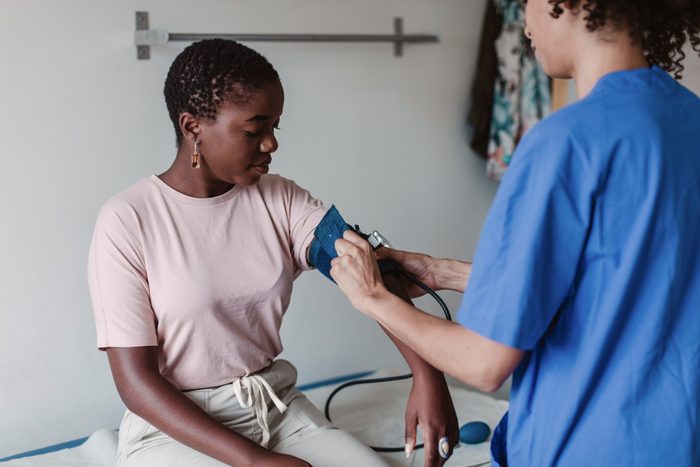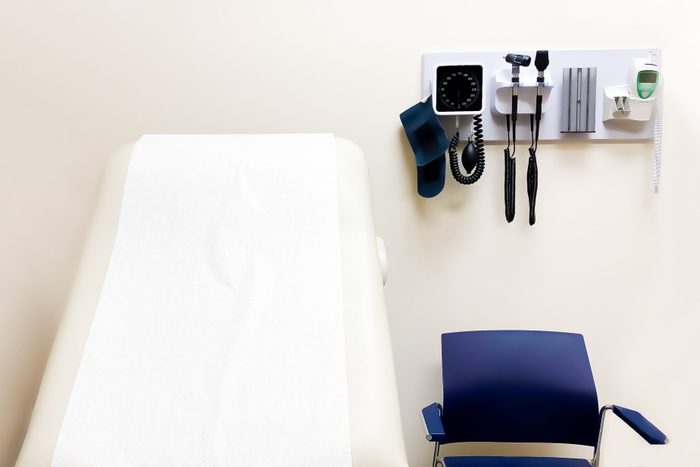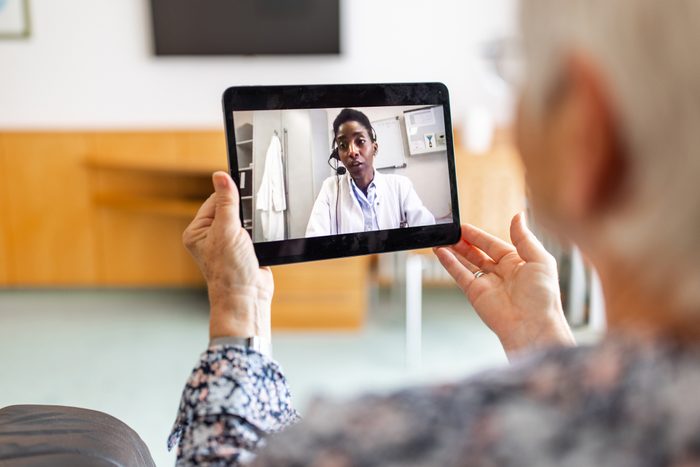
Four-point-seven trillion dollars: That’s the projected amount Americans will have spent on healthcare in 2023. Healthcare spending makes up about 18% of the national economy and averages out to $12,530 per person, per year, according to the Centers for Medicare and Medicaid Services.
The US has one of the highest costs of healthcare in the world—Americans spend over $5,000 per person more than any other high-income nation. And there’s no end in sight for the rising cost of healthcare. It’s become such a worry that 41% of people with insurance said they avoid seeking medical care, even when they need it, according to a 2022 survey. This is especially problematic because whether it’s a small infection or an underlying chronic illness, recent research has shown that delaying medical care often worsens existing health problems and increases the risks associated with preventable conditions.
That’s not to say that people are simply overlooking their health. “Many families across the nation are forced to make difficult choices when it comes to their healthcare,” says family doctor Sherri Onyiego, MD, PhD, FAAFP. “It could come down to having to choose to pay a utility bill rather than refilling a crucial prescription for a chronic condition like hypertension or diabetes.”
Having health insurance is a good first step to avoiding sky-high medical bills—and here’s how to get (and make the most of) the right healthcare plan for your needs. And here, experts share additional guidance with The Healthy @Reader’s Digest on how you can save as much money as possible on healthcare.
When Is the Best Time to Buy Anything? Top 12 Times of the Year to Save

1. Get routine care
“Understand and use your [insurance] benefits to their fullest, especially preventive care,” Dr. Onyiego urges. Routine preventive care, like health check-ups, vaccines, and screenings for skin, breast, prostate, colon, cervical, and other cancers, can be life-saving and cost-saving. “Often, the earlier we can intervene and manage disease, the better the chance of limiting [costly] complications and getting better outcomes.”
Which Vaccines Do You Need This Year? Here Are Experts’ Recommendations for All Ages

2. Go to the right facility
Finding the right doctor for your care is important—but when it comes to your healthcare budget, where you go is also key. Start by making sure the practice, hospital, office, or facility is in your insurance network—and don’t assume that just because your doctor is in-network that the hospital they work out of is in-network as well. Many surgeons, for example, have privileges to practice inside operating rooms at facilities where your insurance might not be accepted.
Next, be careful when you’re choosing between going to a traditional medical office, versus an urgent care, versus an emergency department. Privately run emergency or urgent care facilities are popping up all over the country and are super convenient for problems that just can’t wait for a traditional appointment. The trick? You need to ask when you’re checking in if you’re being seen under “urgent care” or “emergency” services. Too many folks have gone into what they thought was an urgent care only to get billed emergency room prices. Ask first and then read the paperwork before signing.

3. Save on prescriptions
Often, you can save money by asking your primary care provider or pharmacist about lower-cost generic options, Dr. Onyiego says. If you take one of the most commonly prescribed medications, check out Cost Plus Drugs for big savings. It’s also worth your time to check out apps like GoodRx or SingleCare, free resources that compare drug prices and source discounts and coupons (as high as 80% off) available for your prescription.

4. Start an HSA
Planning ahead for long-term health needs with a health savings account (HSA) helps save you money, advises Dev Batra, MD, an interventional radiologist in Dallas, TX. This is because when you pay for qualified medical expenses out of your HSA, that money is tax-free.
For an individual, the US Internal Revenue Service (IRS) allows you to contribute up to $3,650 into an HSA annually—so if you’re in the median tax bracket (24%), that means you save $876 in taxes per year.
But instead of just holding it as cash, you can also invest your HSA funds into mutual funds and other options available to retirement savers, which means these savings can grow for longer-term healthcare needs. (You can still keep a “cash cushion” within your HSA to have money ready for short-term or unexpected medical expenses.)

5. If you’re eligible, claim your Premium Tax Credit (PTC)
The PTC is a refundable credit available to help individuals and families pay for health insurance coverage, says Paul Sundin, CPA, a tax strategist, personal finance expert, and CEO of Emparion. This credit can be used to cover insurance premiums or to lower monthly insurance payments, and it can be “received in advance by having all payments sent directly to their insurance providers.”
To claim this credit, you must meet certain criteria, including:
- You’ve enrolled in a plan through the HealthCare.gov Marketplace
- Your income is between 100 to 400% of the federal poverty level (for an individual, this means an annual income of $13,590 to $54,360)
- You don’t have access to affordable coverage outside of the Marketplace, like through your employer

6. Know when to go to the doctor
You don’t want to avoid medical care, but it can be tricky to know whether it’s worth going to the doctor (and incurring the associated costs) when you’re not feeling great. Today, many insurance providers, major hospitals, and university medical centers offer free “call-a-nurse” hotlines available 24 hours a day, seven days a week. These services connect you with a trained healthcare professional to talk about a health question you have or problem you’re experiencing.
This can come in handy to know whether you should schedule a doctor’s visit, if your symptoms are normal side effects of a medication you’re taking, or if you need reliable advice on self-care and home treatments.

7. Try telehealth
The average cost of a doctor’s visit (without health insurance) is about $287, according to Consumer Health Ratings. But Dr. Batra says that whether you’re uninsured or have limited coverage, telehealth resources are available that offer discounted doctor’s visits, lab services, and even medical treatment. Some highly-rated, affordable options to check out:
- LiveHealth: online appointments from $59
- GoodRx Care*: online appointments from $49
- Sesame Care*: online appointments from $39
*Offers membership that further discounts appointments.

8. Check out your community health center
When it comes to preventive healthcare, community health centers are a goldmine of information, resources, coupons, local aid, and even free samples. They offer freebies for everything from reproductive healthcare and birth control to vaccine programs and basic health supplies (think masks, bandages, and first aid kits).
Many health centers also offer classes, like CPR and first aid training, and support groups for health conditions, such as diabetes. Yet too many people don’t even realize they are there, much less take advantage of all these free or low-cost resources. Drop by your community health center and check out which programs they offer in your area.

9. Get a genetic test
Some consumers are educating themselves about undergoing tests in the clinical setting that can give them insight into the likelihood that they might develop certain conditions. For example, some women who have an immediate biological family member with some types of breast cancer undergo testing for the BRCA genes.
Direct-to-consumer genetic tests like 23andMe may also alert you to conditions you may be at higher risk for—as an example, 23andMe can estimate your risk for developing chronic health issues like diabetes, high blood pressure, high cholesterol, and kidney disease.
These tests do have their limitations, and researchers argue that results are not as conclusive as the type of genetic testing you’d get under the supervision of a licensed provider. (Read more here about the advantages and drawbacks of at-home genetic testing.)
But your results can inform proactive lifestyle changes and conversations with your doctor that can help you make proactive choices and possibly avoid more extensive care down the road.
What Are the Heart-Healthiest Foods? A Cardiologist Just Opened Her Fridge to Reveal Them

10. Make your current health a priority
An ounce of prevention is worth a pound of cure, as the old saying goes. And while easier said than done, Dr. Onyiego says that one of the best ways to keep your medical costs low, now and in the future, is to focus on making healthy choices in your daily life today.
Staying at a healthy weight, getting regular exercise, and not smoking are all practices that lower your risk for a huge range of health problems, she says, which means you avoid the costs of treatment.
With additional reporting by Charlotte Hilton Andersen.
